 He’s homeless…He’s an ex-con…He’s illiterate…He’s an outsider artist. Those are among the elements that have helped build the icon most people know as Purvis Young. But ask the man to describe himself and none of these things come up. “I’m a painter,” he says. In a recent conversation Purvis Young commented on his art, his view of the world’s problems, his life after a kidney transplant earlier this year and his current legal battle with a former business manager.
He’s homeless…He’s an ex-con…He’s illiterate…He’s an outsider artist. Those are among the elements that have helped build the icon most people know as Purvis Young. But ask the man to describe himself and none of these things come up. “I’m a painter,” he says. In a recent conversation Purvis Young commented on his art, his view of the world’s problems, his life after a kidney transplant earlier this year and his current legal battle with a former business manager.
Steve Mayo: The horses, the angels, the characters, the stories your art tells, the elements of your work, where do they all come from?
Purvis Young: I grew up watching segregation in Miami during the Martin Luther King marches in Alabama. I see it here and put it in my art. I meet people from Europe and different countries and they say they didn’t know America was like this, you know? That’s the first thing they tell me sometimes. They didn’t know this kind stuff goes on. So I have to put it in my artwork.
Born in 1943 in Miami’s Liberty City, Young grew up in an Overtown different from what’s now left after the 1960s construction of Interstate 95 that ripped apart a thriving community. What was left after the freeway was built, an urban renewal project in the 1970s wiped out, leaving the despair Young’s angels provide hope for in his art.
As much as a town, or in this case a neighborhood can influence, Overtown is part of the artist and continues to influence Young’s work whether recording its history or harnessing its hope on canvas, cardboard, plywood, a campaign sign or anything else he finds to paint on.
SM: What do you want people to understand about your art?
PY: I express my feelings through my art. I try to let people know through the characters that everything is not so lovely. In Overtown they always tell us we’re going to heaven. Even though we see the dope and everything else, we’re still going to heaven. My feeling was things are gonna get better in the world.
SM: Have they gotten better?
PY: I don’t know. You see the trouble in the world now. The rich get richer and the poor stay poor. War and everything. It’s still problems and stuff. I just paint angels trying to make it better, trying to help people.
SM: Do you see yourself as one of those angels?
PY: I paint these problems. I tell my friends I can’t solve the world’s problems. I have to paint these things. How I feel, you know?
SM: You received your kidney transplant earlier this year, what’s next for you and your art?
PY: You know I got this lawsuit? I want to give the guy a break. But I kept asking the guy about my money. His name is Martin Siskind. I kept asking about my money and he kept giving me the runaround. So I filed a lawsuit. But I keep working on the things that come to my mind.
I’ll keep doing the same thing like I been doing. I like to paint wild horses, they represent freedom.
{mospagebreak}
In February, shortly after Young’s 64th birthday, his attorney filed suit against Siskind for failing to record sales, turn over profits to the artist and locking Young out of his own studio. In a counter-suit Siskind is seeking to have Young declared mentally incompetent and seeking ownership of half of Young’s work.
SM: Do you feel like you’re life has been one led free?
PY: Yeah. I see a whole lot of things going on in America. I see the way certain people come from other countries and they give them the rights to stay. I see some people come from other islands they’re denied of their rights. I see all kinda shit.
Young admits he’s no angel. He spent three-years in prison for breaking and entering. However, the same way the angels represent hope in his art, it was art that gave him hope. As a 7 or 8 year-old boy, he remembers watching his Uncle Irving paint but it wasn’t until prison that he started painting. “My uncle was a painter. He didn’t tell me nothing about it. I just watched him paint. I was a young boy. I couldn’t catch on to what he was doing. But when I was in the penitentiary I taught myself to paint. I just wanted to paint and express my feelings.”
And it was not long after repaying his debt to society that he started hanging his paintings on the outside wall of an abandoned building in Goodbread Alley, a stretch of 14th Avenue in Overtown named for a bakery. Young’s work has journeyed from that alley, where collectors and the media found it, to galleries and museums throughout South Florida and the rest of the country.
“I got the idea from the wall of respect in Chicago, ”Young recalls about the project. “I just wanted to express my feelings.” He did and still does, but he has also studied other masters along the way, whose work has helped guide Young’s.
While the details of Young’s life tend to build much of the mystic around the artist and even a documentary released last year, Purvis of Overtown, Marvin Holloway, a collector who has collected art by African American artists since the late 1960s, including Young’s work, contends that rarely is Young’s artistic ability regarded with the same amazement. “They leave out the work, ”Holloway says. “People focus on Purvis the individual. Even the so-called professionals don’t spend a lot of time talking about the work’s aesthetics and the compelling character of the work or his technique. What people do, because they don’t know what to do with his work, is they call him an outsider. And that doesn’t make sense because he’s in the Smithsonian, the Bass, Miami Art Museum. At museum after museum across the country you’ll find Purvis Young. He’s in the institutions where insiders are legitimized and art history defined. The begging questions, as prolific as he is, where will he go from there?”

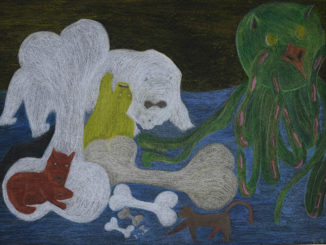
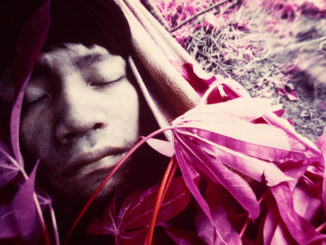
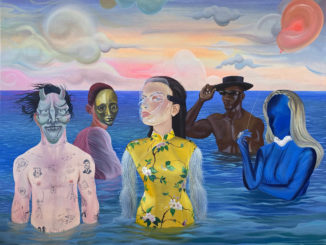
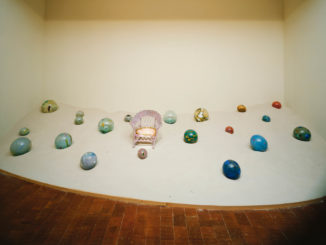
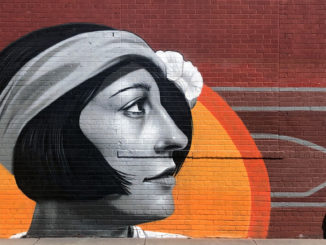
Be the first to comment